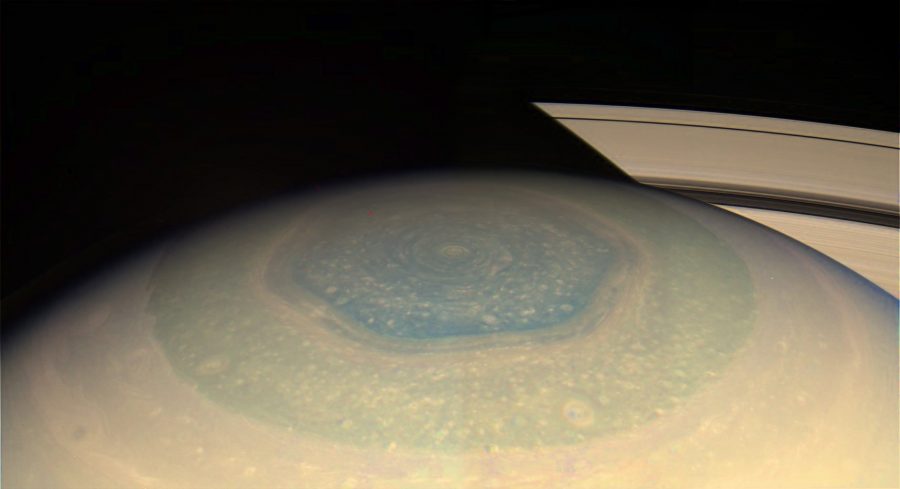NASA’s Cassini probe just flew between Saturn and its rings on Wednesday, taking the closest pictures of Saturn’s atmosphere to date.
The pictures show a sinister-looking dark storm, which NASA called a “giant hurricane.” Launch scientists expected the worst to occur at the planet’s gap as the probe traveled its first orbital trajectory out of 22.

The closest we’ve ever gotten to Saturn
Cassini passed just 1,900 miles above Saturn’s highest clouds and 200 miles below its innermost ring. The team was on the watch for dust and debris flying at hundreds of miles per hour, potentially damaging the probe. Luckily, this did not occur, and data was collected during the whole trip.
The probe reached speeds of 77,000 miles per hour about the planet’s surface. Over 350,000 images resulted from the journey whose current stage started in 2004 when the probe arrived at Saturn for the first time.
Cassini has become the spacecraft that’s approached Saturn unlike any other. Previous to Cassini, NASA scientists could only rely on predictions based on past experiences. The first orbital voyage of Cassini was perceived as a success as it went just as its crew planned.
It seems that Saturn’s atmosphere consists mainly of hydrogen, and the pressure at its cloud tops is similar to Earth’s at sea level. There’s also an immense, hexagon-shaped storm on its north pole, while other powerful storms take place all over the planet’s surface.

The probe is scheduled to perform 21 additional orbits before it dives into Saturn on September 15. The next event of this kind is scheduled for Tuesday, May 2. Each jump will take different paths, which will result in images of the various regions while also providing a different perspective on areas that are already known.
Cassini also captured images of Saturn’s moon Atlas, which looks like a UFO, and of Titan, another of Saturn’s moons, which was reached by the European Space Agency’s Huygens lander on 2005.
Other NASA missions include Dawn, which will explore Ceres in 2017, and Juno, which will reach Jupiter sometime in 2018. Finally, the New Horizons mission will be reaching the Kuiper Belt Object 2014 MU69 on New Year’s Day 2019.
The 22 orbits that Cassini will accomplish are called the “Grand Finale” of the mission, as it has been on Saturn for 13 years.
“We’re going to have to say goodbye to this amazing mission. I have another five months to get very emotional about it. In the meantime, we’re going to have the opportunity to top off this wonderful mission with a lot of new measurements for the rings and for Saturn’s interior,” stated Athena Coustensis, a Cassini investigator at the Paris Observatory.
Saturn is believed to consist mostly of helium and hydrogen, with a small rocky core surrounded by many different volatile materials. The core is thought to be similar to the Earth, albeit much denser, perhaps 9 to 22 times more massive than the Earth.
Source: Space
